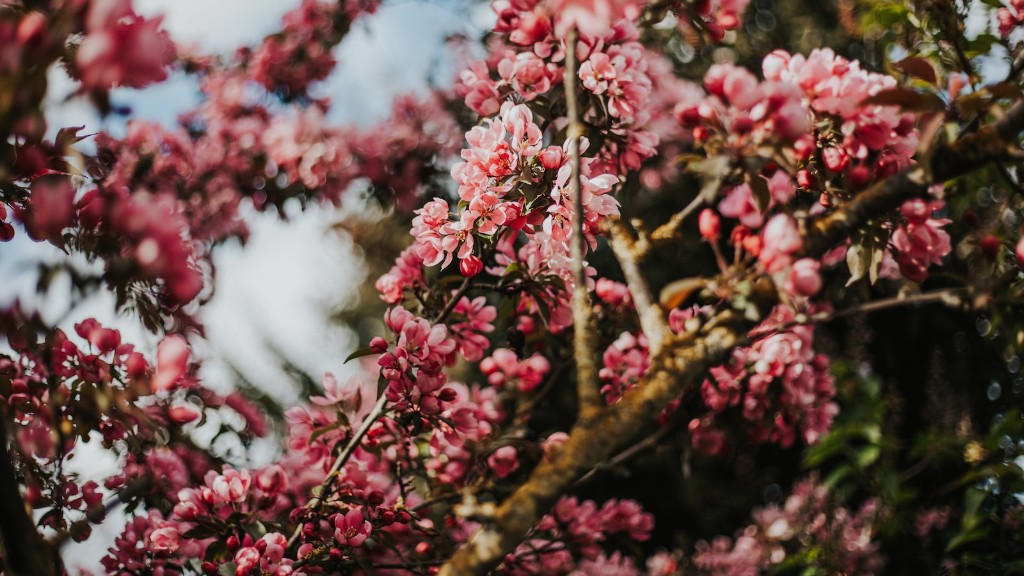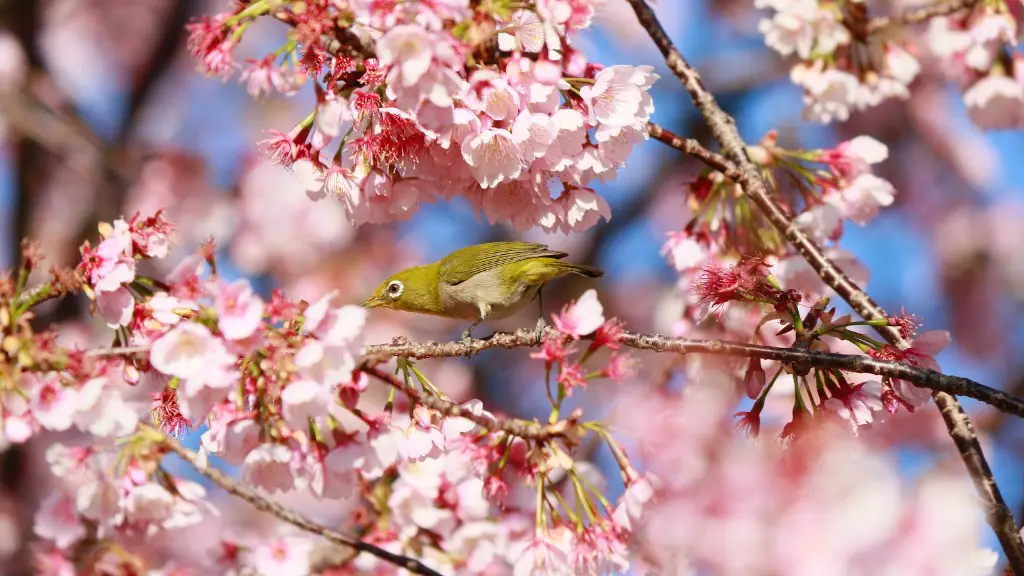Environmental Benefits of Wild Cherry Trees
Wild cherry trees, found in the wild and farmed for their wood and fruit, have been an important part of human life for millennia. Their wood is valued for its beauty and durability in furniture, while their fruit can be used to sweeten drinks, desserts, preserves and condiments. But, wild cherry trees offer much more than these practical benefits; they also have valuable environmental advantages.
Wild cherries are known to be fast-growing shade trees and one of the few species of trees that bear fruit in the early stages of growth. This makes them attractive to wildlife who depend on the shade of such trees. Wild cherry trees are also resilient; they can survive in a variety of conditions and soil types, making them more likely to succeed in less than ideal climates.
These trees also provide a natural barrier for homes and for buildings, making them a cheap, efficient and sustainable form of security. Additionally, cherry trees are a wonderful source of nutrition for birds, mammals and other animals. As the trees get older, more fruits will be produced; this increases the total amount of foraging for animal populations.
The Price Tag for Wild Cherry Trees
Wild cherry trees can be expensive due to the high demand for their wood and fruit but how much is a wild cherry tree actually worth? This depends on a variety of factors; the species, the rarity, the size, the quality and where it is purchased.
Wild cherry trees can be found online, at garden centers and sometimes even in forests. Prices can range from a few dollars for a sapling to hundreds of dollars for a mature tree.
In some cases, wild cherry trees can be very expensive if they are especially rare.On top of this, special care may need to be taken when it comes to harvesting and transporting a cherry tree due to its vulnerability to pests.
Common Types of Wild Cherry Trees
There are many different species of wild cherry tree that are found all over the world. The most common type is thesweet cherry (prunus avium), which is native to Europe and notorious for its bright red fruit.
Another popular species is the black cherry (prunus serotina), which is native to North America and grows to be a large, impressive tree. It’s also sought-after for its rot-resistant wood and sweet-yet-tart tasting fruit.
Also found in North America is the Choke Cherry (prunus virginiana) which produces an abundance of insignificant fruit and is primarily used for shade and shelter.
Uses of Wild Cherry Trees
Wild cherry trees are useful to humans, animals and the environment in a lot of ways. The traditional, common uses of wild cherry trees are:
-The wood is used to make furniture, kitchen utensils, and tools
-Wild cherries are cultivated or picked directly from the trees to use in recipes
-Shade, privacy and protection as a living fence and windbreak
-Photo-pollution protection as they reduce light-source pollution
-Wild cherries are a source of food for animals such as birds, squirrels and deer
Cultivating Wild Cherry Trees
Wild cherry trees can be grown from seed, cuttings or grafts. They thrive in full sunlight and well-drained soil, though they will tolerate partial shade. Wild cherry trees should be planted in an open area that is away from buildings and high traffic areas.
They need to be carefully monitored and should be trimmed and pruned regularly to ensure their health and size.If planted correctly and regularly maintained, wild cherry trees can reach full maturity and provide a harvest for a lifetime.
Animal Interactions and Wild Cherry Trees
Wild cherry trees attract a variety of animals, from bees and butterflies to birds and squirrels. Because of this, they also attract a piece of the food chain: predators. Deer, foxes, raccoons and other animals come to the wild cherry trees looking for a meal.
This can be destructive, as these predators can either eat the fruits or damage the tree in their pursuit for food.People who live in areas near wild cherry trees should take pains to discourage animal visits to prevent damage to their trees.
Preserving Wild Cherry Trees
On top of actively discouraging animals from visiting wild cherry trees, people can also take steps to preserve wild cherry trees. Pruning and thinning, removing dead branches and maintaining healthy growth is the best way to ensure the health of the tree.
Additionally, fertilizing the tree at least once a year and setting up bug and disease prevention plans are important to keeping wild cherry trees healthy. Properly maximizing fruit production with pruning is also a great way to get the most out of a wild cherry tree.
Wild Cherry Trees as an Investment
People looking to invest in wild cherry trees should know that there is an immense amount of potential for financial gain.
Due to the high demand for wild cherry wood, planting a wild cherry tree can be almost certainly guaranteed to provide profit within a reasonable amount of time.
Investing in a wild cherry tree can also provide the opportunity to sell a variety of products derived from the tree; these products can include but are not limited to furniture, kitchen accessories, preserves and wine.
Harvesting Wild Cherry Trees
Harvesting wild cherry trees is relatively straightforward, with most fruits ripening around summer or autumn.
The fruits can either be hand-picked or, if the tree is producing an abundance of fruit, collecting the fruits with a rake or a net can save time. Since wild cherry fruits can easily bruise, they should be handled with delicate care and immediately refrigerated or canned for storage.
Homeowners should be aware of wild cherry trees in their area, as they produce large amounts of fruit that can attract pests.
Wrapping Up Wild Cherry Trees
Wild cherry trees are beautiful, valuable and incredibly useful trees that offer several environmental, nutritional and financial benefits. Their wood is coveted for its practicality and beauty and their fruit is prized for its sweet-tart flavor.
Everyone should be aware of the environmental benefits of wild cherry trees, as well as the investment potential of this species.With the proper maintenance and care, a wild cherry tree provides a source of income and enjoyment for generations.

